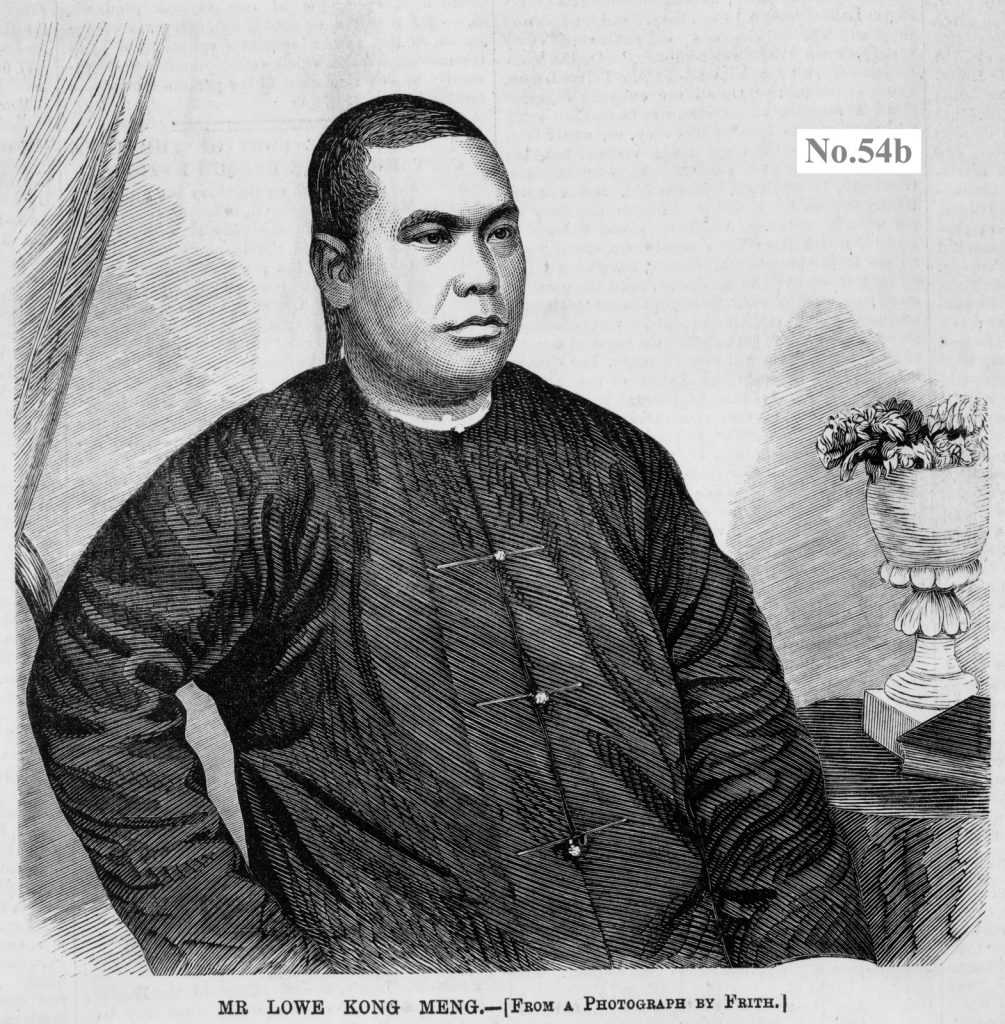
For over 50 years an Australian bank issued its own bank notes with the name of the bank and the denomination printed on it in Chinese. Surprisingly this fact drew relatively little comment at the time and even now is treated merely as a curiosity (not to mention a rarity with such a note worth $20,000 to $30,000 nowadays). Printed on all these notes from the bank’s establishment in 1866 until the Commonwealth took over the issuing of all bank notes in 1910 was 新金山金媽士銀行 or “The Commercial Bank of Australia”, which can be more literally translated as “New Goldfields Gam-maa-sze Bank” with “金媽士”rendering the word “commercial” phonetically in Cantonese. (壹磅 = one pound) (See No. 29 for more on Gold Mountains and remittances.)
Subject to a competition, the winning design had been announced in June 1866 matter-of-factly: “The distinguishing, feature of the prize note is that the name of the bank and the denomination of the note in Chinese characters are artistically worked into the border.”[1] When the bank itself and its provisional committee had been announced only a few months earlier two of its directors had been prominent and necessarily wealthy businessmen of Chinese background, Lowe Kong Meng and Louis Ah Mouy.[2] This too had generated little comment beyond the speculation that the new bank desired to attract as many Chinese depositors as possible: “A novel feature in banking, the Commercial Bank, just opened, has the value of its notes printed in Chinese characters on the margin of the note. If the Celestial is found to give them a preference, I suppose the other Banks will follow suit.”[3]
Apart from this obvious Chinese link it appears to have been left to conjecture as to the specific purpose of the bi-lingual notes. Another speculation at the time, accompanied by a not unusual misinterpretation was: “The Chinese, who have so strong an objection to take “paper”, will now, no doubt, get over their scruples, for there are certain Chinese characters on the margin explaining the purpose for which the notes are intended.”[4] With many of the Chinese people in Australia at the time actually miners of gold the preference for [gold] coins was understandable. And both Lowe Kong Meng and Louis Ah Mouy were so prominent in the shipping of “specie” that they ranked only after two banks in the list of shippers of gold in 1867.[5] (See also No.61.)

Quite possibly the Commercial Bank of Australia was successful in attracting Chinese customers, though whether this was merely due to its name appearing in characters on the notes or due to the networking of Lowe Kong Meng unclear. A clue appears in Darwin in 1893 when it is reported that the Chinese “dealt very largely with the Commercial” when that bank temporarily suspended operations.[6] A similar change in fortune seems to have also accompanied former director Louis Ah Mouy who by 1894 was not only no longer a bank director but was being sued (or rather his wife was) by his former bank over financial irregularities. This did not stop him claiming the bank notes to have been his idea in the first place.[7]
These now rare bank notes mark both a time when people of Chinese heritage participating at all levels of Australian society was not so unusual, and that much of Australian history will remain “whitewashed” until more such supposed “rarities” are brought to light.
[1] Argus, 26 June 1866, p.4.
[2] The Age, 16 March 1866, p.3.
[3] Ovens and Murray Advertiser, 6 October 1866, p.2.
[4] Kyneton Observer, 4 October 1866, p.3.
[5] Argus, 29 March 1867, p.4.
[6] Northern Territory Times and Gazette, 7 April 1893, p.2.
[7] The Herald, 21 June 1894, p.2 and Portland Observer and Normanby Advertiser, 27 June 1918, p.3.

